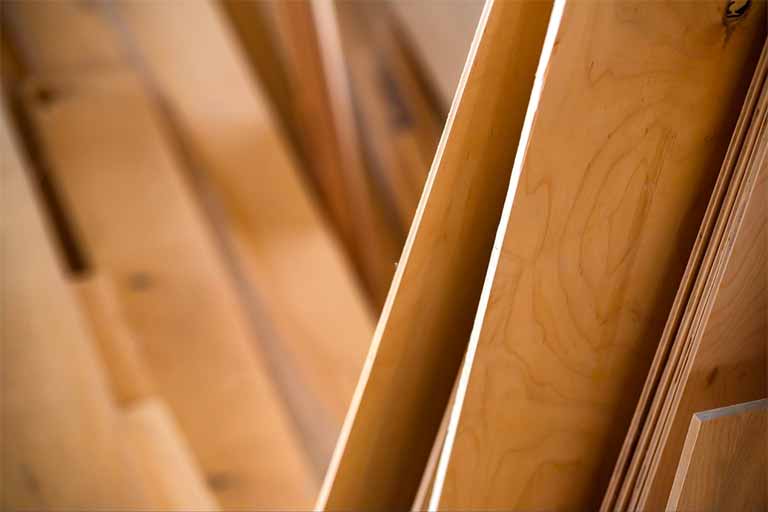
The Differences Between Marine Plywood and Regular Plywood
The Differences Between Marine Plywood and Regular Plywood
Plywood is a versatile material that is used extensively in construction projects. It comes in different varieties, including regular plywood and marine plywood. Choosing the right type of plywood is important and can affect the durability and safety of a building or project. In this article, we will discuss the differences between marine plywood and regular plywood, their characteristics, applications, and maintenance tips.
Understanding Plywood
Plywood is a sheet material made by gluing together thin layers of wood veneers. The veneers are glued together with adjacent layers having their wood grain rotated up to 90 degrees to one another. This arrangement gives plywood strength and dimensional stability.
Plywood is commonly used in construction and furniture making. It is also used in packaging, aircraft, and vehicle construction.
Regular Plywood: Overview and Characteristics
Regular plywood is also known as interior plywood. It is made from different types of wood, including pine, fir, and mahogany. The quality of regular plywood depends on the grade of the wood used, with A being the highest and D being the lowest.
Regular plywood is not waterproof and should not be used in damp or wet environments. It is suitable for use in interior and non-water contact applications, such as furniture, cabinetry, and general construction projects.
Marine Plywood: Overview and Characteristics
Marine plywood, also known as waterproof plywood or exterior plywood, is specifically designed for use in water-related and high-moisture environments. It is made from hardwood veneers, such as birch, and has a void-free core that is bonded together with waterproof glue.
Marine plywood has enhanced water resistance and durability compared to regular plywood. It is ideal for boat building, docks, and outdoor construction.
Construction and Manufacturing Differences
Glue and Bonding
Regular plywood is bonded together with different types of adhesives, including urea-formaldehyde, phenol-formaldehyde, and melamine. These adhesives are not waterproof. In contrast, marine plywood is bonded with special waterproof adhesives, such as phenol-formaldehyde and epoxy.
Veneer Quality and Thickness
Regular plywood has lower veneer quality and thinner veneers compared to marine plywood. The veneers in regular plywood are typically 1/8 inch thick, whereas marine plywood has veneers that are 1/4 inch thick or more.
Plywood Layers and Core Gaps
Regular plywood has more layers and larger core gaps compared to marine plywood. It typically has three to five layers, with a core gap of up to 1/8 inch. In contrast, marine plywood has fewer layers and minimal core gaps.
Water Resistance and Durability
Exterior vs. Marine Plywood
Exterior plywood has limited water resistance and is not suitable for use in damp or wet environments. In contrast, marine plywood has enhanced water resistance and durability and is specifically designed for use in water-related and high-moisture environments.
Plywood Treatment and Protection
Regular plywood can be chemically treated for limited water resistance. In contrast, marine plywood has enhanced protection and resistance to moisture due to its construction and bonding.
Applications and Best Uses
Regular Plywood Applications
Regular plywood is suitable for use in interior and non-water contact applications, such as furniture, cabinetry, and general construction projects.
Marine Plywood Applications
Marine plywood is ideal for use in water-related and high-moisture environments, such as boat building, docks, and outdoor construction.
Strength and Structural Integrity
Marine plywood has higher strength and structural properties compared to regular plywood. It can withstand exposure to water and moisture without delaminating or deteriorating.
Cost Comparison
Marine plywood is more expensive than regular plywood due to its enhanced water resistance and durability.
Common Misconceptions
There are common misconceptions that marine plywood and regular plywood are the same. However, they have significant differences in construction, bonding, and water resistance.
Maintenance and Care
Proper maintenance and care of marine plywood and regular plywood are essential to prolong their lifespan. Avoid exposing them to moisture, direct sunlight, and extreme temperatures. Regular cleaning and sealing can also help protect them from environmental factors.
Where to Buy?
Marine plywood and regular plywood are available from different suppliers. It is important to purchase from reputable suppliers like SFK Plywood that offer high-quality plywood.
Choosing the right type of plywood is important for the durability and safety of a building or project. Marine plywood and regular plywood have significant differences in construction, bonding, and water resistance. Marine plywood is ideal for use in water-related and high-moisture environments, whereas regular plywood is suitable for use in interior and non-water contact applications. It is important to understand the properties and applications of each type of plywood before making a decision.